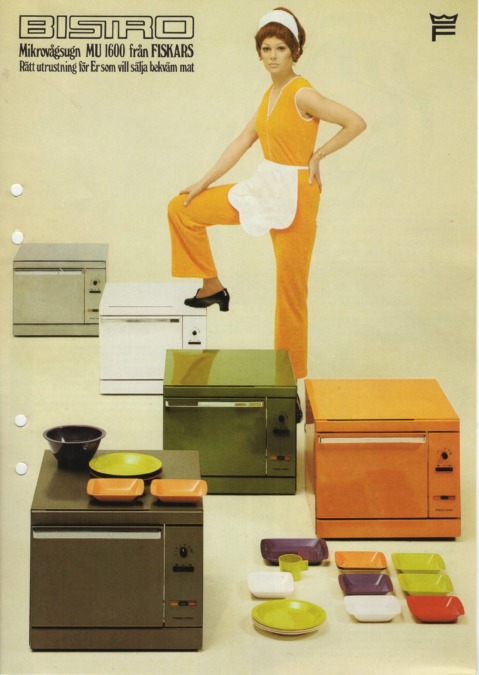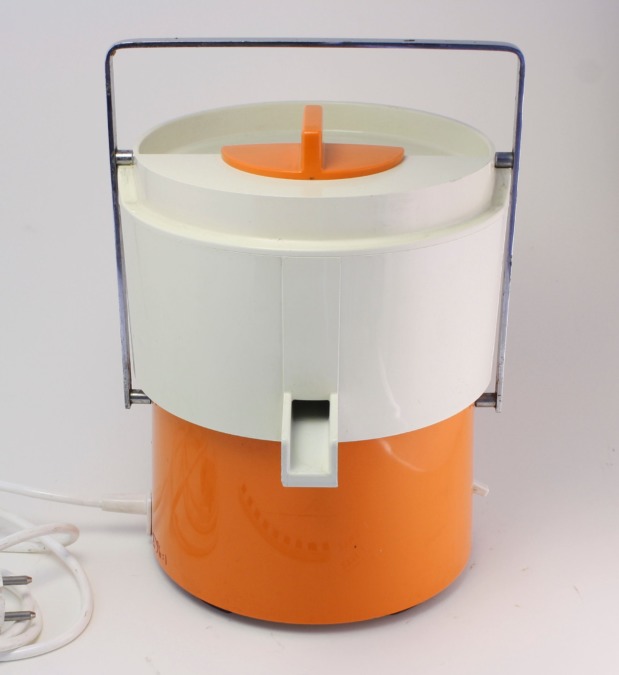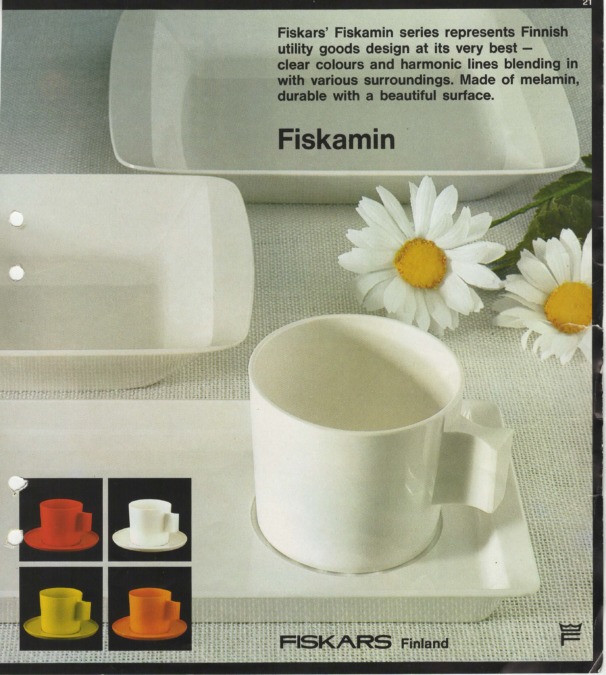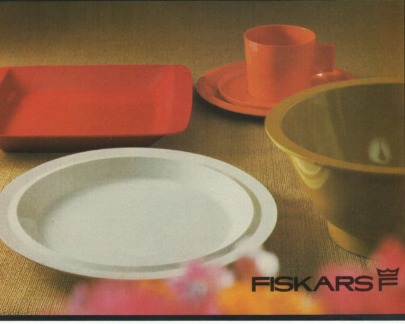By the 1960s, plastic had become a common everyday material. The Fiskars corporation also began manufacturing products made out of plastic in the early 1960s. These included among others new electric distribution boards, plastic crates for beer- and soda bottles, and insulation foam rubber such as Fiskacell. New materials and techniques were also used in developing and manufacturing Fiskars household appliances. Some of the plastic products were manufactured in Tammisaari, where Fiskars had purchased the old Pohjan Verkatehdas textile factory. This building burnt down in 1966, a big incident in the small town of Tammisaari.

In the mid-1960s, Fiskars development department was situated in Vallila, Helsinki. Here products such as electronic devices and household appliances were designed, for example the Fiskars juice maker, hairdryer, electric whisk and microwave. Plastic Fiskamin-dishes were also made in the 1960s and 1970s.

Juice maker 1965–1970
Microwave 1965–1973
Fiskamin dishes 1961–1973
Scissors 1967-
Scissors have been made in the Cutlery Mill in Fiskars since the early 1800s. From this time up until the early 1960s, they were made mostly by hand. In the 1960s a new production method was developed in Germany, and Fiskars attempted to use this method until it was found to be too complicated and inconvenient. The staff of the Cutlery Mill continued to develop the manufacturing methods, and simplified production by using sanding. Now a rivet was used instead of a screw to assemble the scissors, and the handles were made out of plastic. Thus, manufacturing scissors became cheaper, and both their practicality and appearance improved.

Production of the famous orange scissors began in 1967 at the Cutlery Mill, but soon this facility grew too small. In the early 70s the Fiskars corporation made its first big investment in a long time: a new scissor factory was built in Billnäs in 1972. By the late 1970s, 300 000 orange-handled scissors were made per month. Their production had developed from forging to industrial scale manufacturing, and focus had shifted towards making consumer products.
